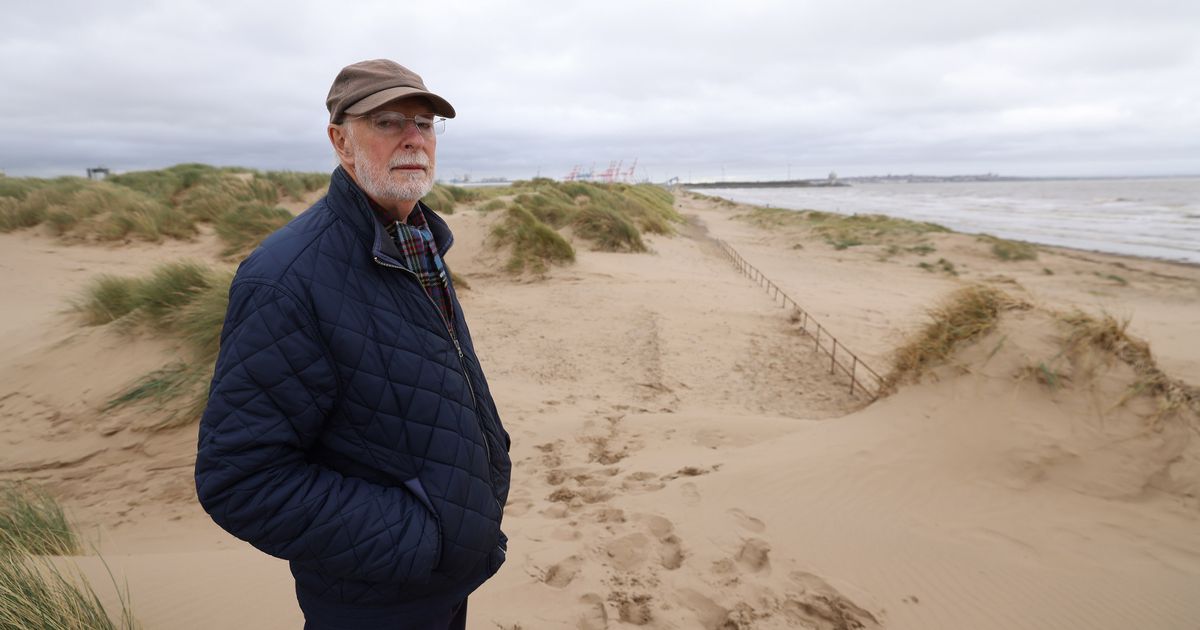Sefton Council said it has removed ‘thousands of tonnes’ of blown sand at Crosby Coastal Park this year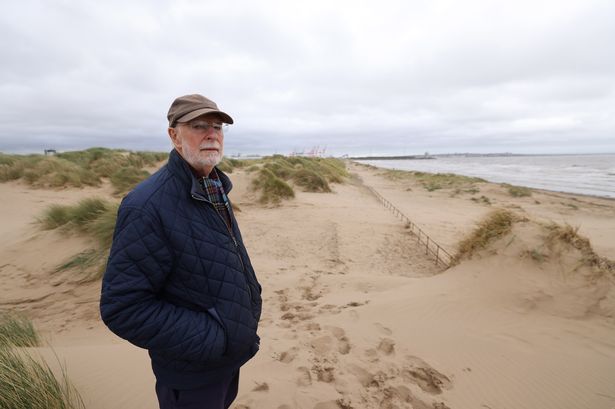 Campaigner Chris Wolstenholme on the dunes at Crosby beach(Image: Liverpool Echo)
Campaigner Chris Wolstenholme on the dunes at Crosby beach(Image: Liverpool Echo)
A popular and much-loved coastal path is now filled with hidden “dangers” you simply cannot see, according to campaigners. The problem is the wind blown sand which has largely buried the pathway, and turned safety signage into hazards.
Crosby’s seafront promenade offered families, cyclists and dog walkers an easy route along the coast, but in recent years, the majority of the path has vanished beneath the dunes. What should be a simple stroll along the sea wall is now a mini-expedition, up and over mounds of soft sand that rise above head-height.
The Liverpool ECHO visited the site in September, where the sand coverage is so overwhelming that the metal railings are largely gone, the signage is barely visible and even one of Anthony Gormley’s Iron Men is buried up to his neck. The path is little more than a memory.
For Christopher and Linda Wolstenholme, local campaigners and long-time residents, this slow burial has become a kind of heartbreak. “It’s dangerous now,” Linda says, shaking her head. “There are signposts eight feet tall and only the tops stick out of the sand.
“You’ve got bare poles, half-submerged fencing, and drops you can’t see. Then there’s the issue of accessibility, because if you’re a wheelchair user or a mum with a baby and a buggy, the coastal path is completely cut off to you.”
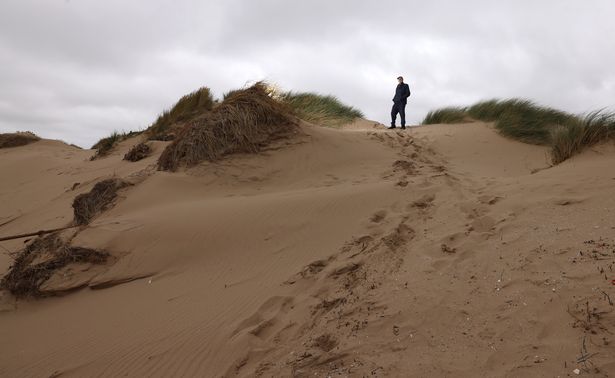 Campaigner Chris Wolstenholme on the dunes at Crosby beach(Image: Liverpool Echo)
Campaigner Chris Wolstenholme on the dunes at Crosby beach(Image: Liverpool Echo)
The promenade, which runs between Waterloo and Crosby Coastal Park, was built in the early 1970s and offered sea views, salty air, and a flat, safe route for people to enjoy the splendour. Today, much of it lies hidden beneath wind-blown sand that’s migrated inland from the beach.
The causes are complex, but not insurmountable, Chris said: “Over the years the high tide has receded, so the beach stays dry for longer.
“The sand doesn’t get washed back by the tide anymore, and it just blows straight up onto the prom. We’re not talking about natural dunes here, these are man-made mounds, full of litter and waste.”
A Sefton Council spokesperson said: “Our Green Sefton team regularly monitors and inspects the coastline. We have removed thousands of tonnes of blown sand at Crosby Coastal Park just this year alone to clear paths as much as possible with the resources available.
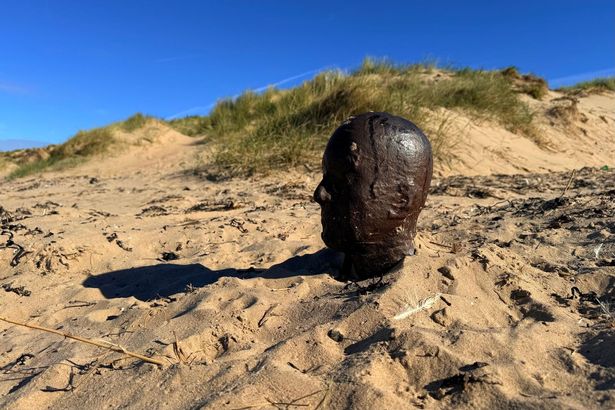 Iron Man a Crosby Beach up to his shoulders on Crosby Beach (Image: LDRS)
Iron Man a Crosby Beach up to his shoulders on Crosby Beach (Image: LDRS)
“We are reviewing all potential measures to ensure that our coastline is safe for all visitors to come and enjoy.”
Chris and Linda lead the “Save the Promenade!” campaign, a small but determined movement calling on Sefton Council to clear the sand from Crosby’s seafront walkway – or at least facilitate an opportunity for others to do so.
In 2022, the group submitted a petition which David presented to local councillors at Southport Town Hall. It includes a proposal by a local construction firm which offered to clear the sand free of charge, provided it can keep the material for recycling.
But Sefton Council officials have so far refused the offer, saying it is not feasible or desirable, fearing the work would be disruptive to local residents, and could affect coastal habitats. Linda and her fellow campaigners are unconvinced. She said: “In terms of the impact on residents, well, there’s never been a consultation on that, but we’d certainly welcome one.”
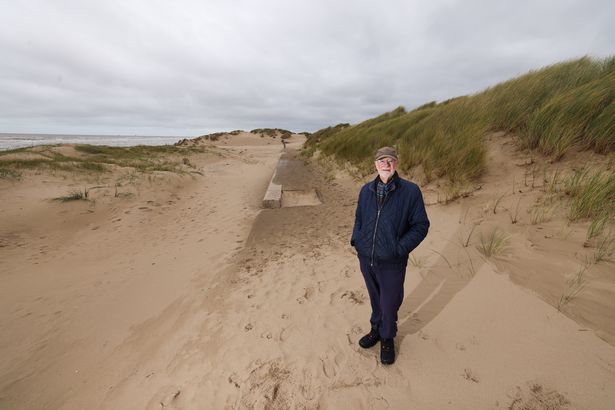 Campaigner Chris Wolstenholme on the dunes at Crosby beach(Image: Liverpool Echo)
Campaigner Chris Wolstenholme on the dunes at Crosby beach(Image: Liverpool Echo)
Chris added: “A possible compromise solution would be to explore again the attempt to re-profile the dunes on the beach, reducing the height of the ones looming over the path on the promenade, and fencing them on the seaward side of the beach to protect them. Then seeding the area with Marram and other suitable vegetation to reduce sand blow.
“In other words what began to be attempted by Coast and Country under David McAleavy before it was merged with Parks and Gardens to become Green Sefton.”
In response, a Sefton Council spokesperson said: “We appreciate that the accessibility of the coastal path is an important matter, and we welcome feedback from residents and community groups.”
“The build-up of sand on the coastal path is the result of ongoing natural processes lasting tens of thousands of years that have caused the beach level to rise, meaning that any operation to remove windblown sand and lower the level of the beach would involve moving millions of tonnes of sand.”
 Campaigner Chris Wolstenholme on the dunes at Crosby beach(Image: Liverpool Echo)
Campaigner Chris Wolstenholme on the dunes at Crosby beach(Image: Liverpool Echo)
In a sense, Crosby’s dunes are a parable for the entire British coastline: the uneasy meeting of nature’s drift and human design. Coastal engineers will tell you sand is never still, while wind and tide shift it endlessly. To maintain a flat promenade against those forces requires constant labour and dedicated resources.
Sefton Council is not alone in its struggle. Across the UK, councils face mounting costs to maintain seafront infrastructure built in an age of civic optimism, now battered by climate change, erosion and the forces of austerity.
For Chris and Linda, the campaign to better manage Crosby’s coastline goes on and they will continue to stay in dialogue with Sefton Council: “This isn’t just about money” says Linda, “It’s about memory and belonging.
“This promenade was built by the old Crosby Borough Council and local residents paid for it. It was their pride and an important piece of civic heritage.
“We just want to ensure that future generations are able to enjoy it too.”
